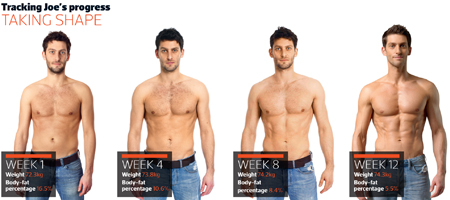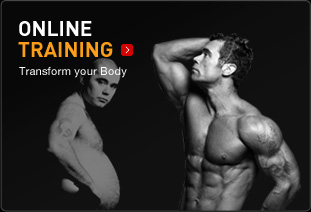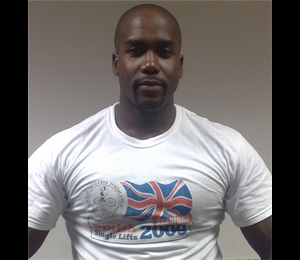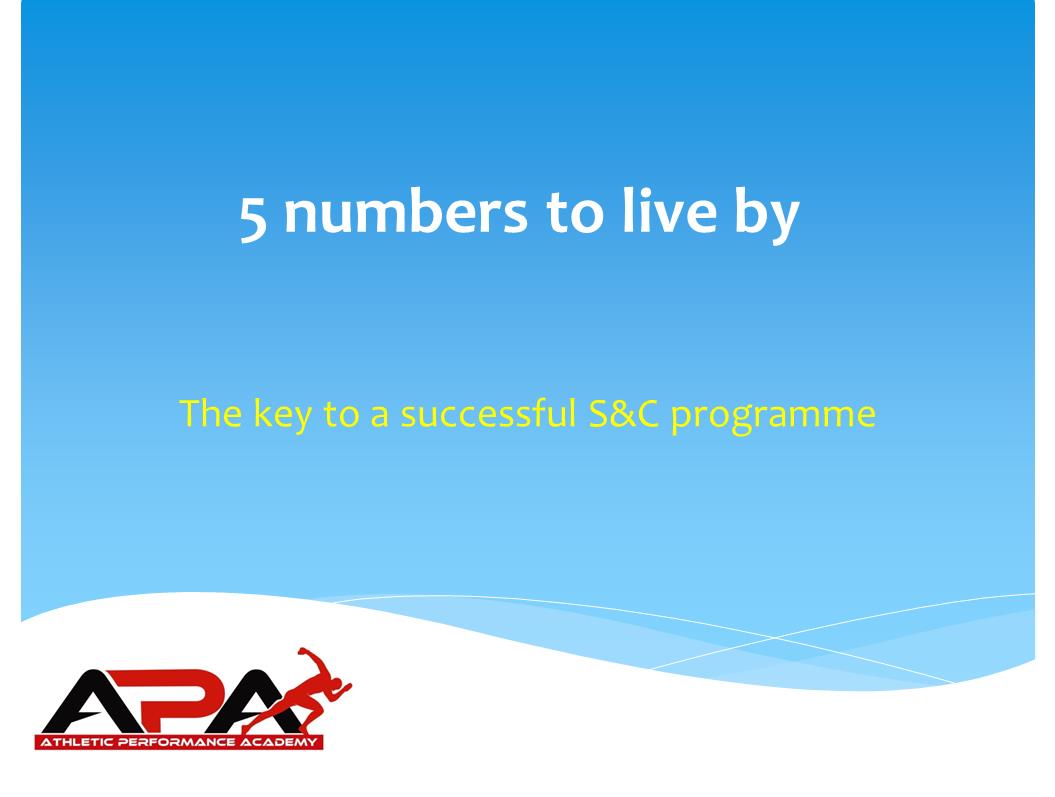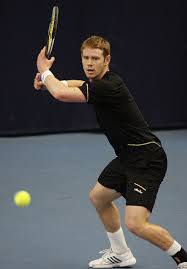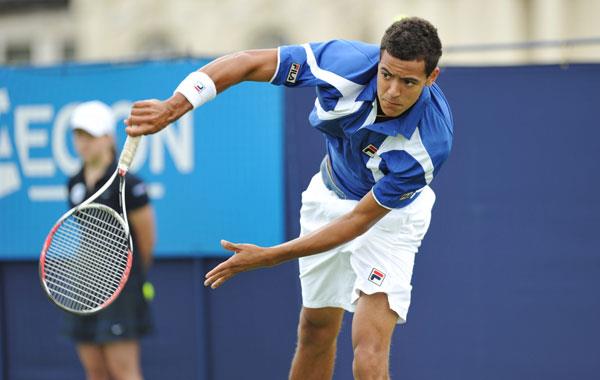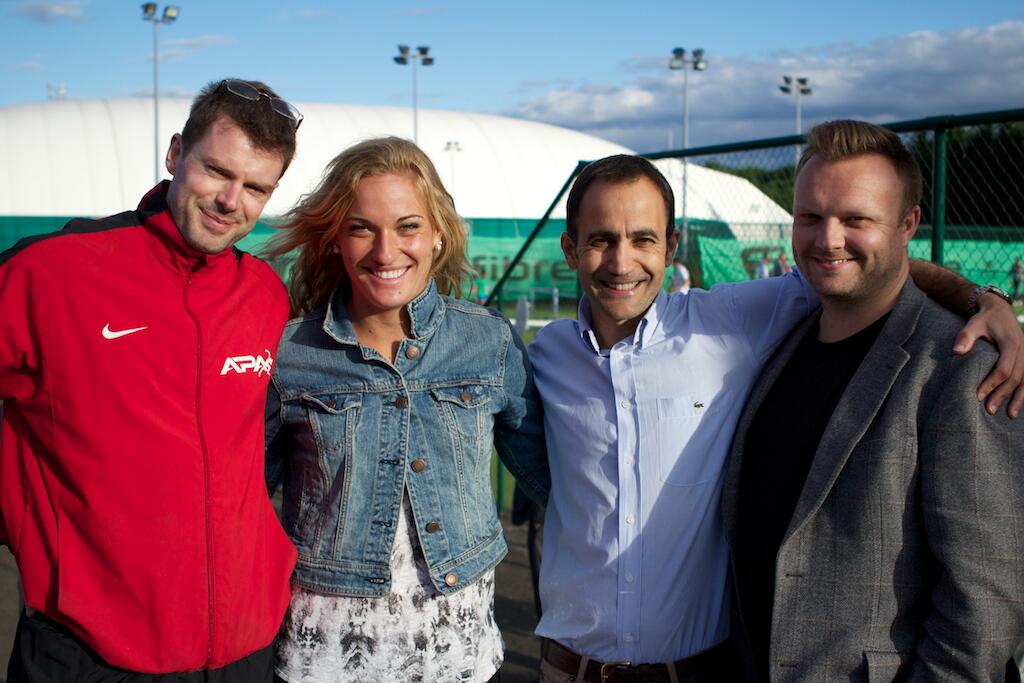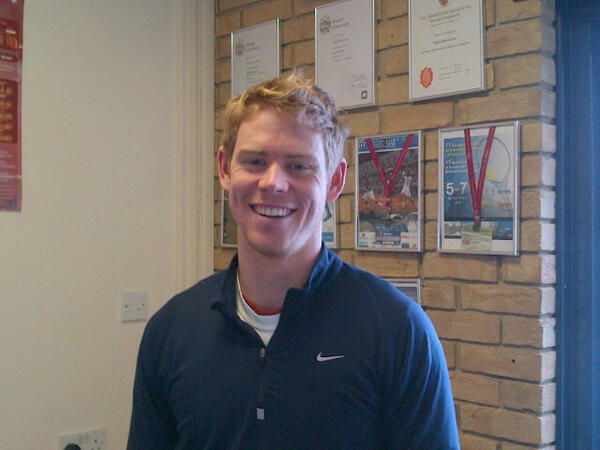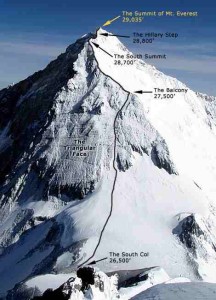Narelle Sibte, who was the National Strength & Conditioning Manager of the Lawn Tennis Association between 2007-2009, once presented a slide to me that I have never forgotten.
3 is the magic number
> 3 intense sessions per week of specific training is required to improve any aspect of physical fitness
> 3 weeks of intensive training is required to start to improve performance
> 3 consecutive weeks of tournament play will result in a drop in physical fitness
This little statement reminds us that we need to be training one or two qualities several times a week over an extended period of time to get an Training effect. It also reminds us of the Law of Reversibility: Use it or Lose it!!!!
So far the majority of the discussion from my philosophy posts has focused on the design and content of a typical session in the gym presupposing that it will be focused on strength and power development. I have also been talking about only one session.
To me one of the stand out qualities of a strength & conditioning coach that separates them from the typical personal trainer is their ability to design multiple sessions per week over a defined period.
Crucially all these sessions have to dovetail nicely so that they compliment each other. The last thing you want to do is programme too many neurally high intensity sessions in close proximity to each other and bury your athletes!!!!! The ability to plan multiple training sessions across a week and month is part art and part science. I have experimented with numerous layouts and combinations over my career.
Dan John often says anyone can design a programme for 6 weeks and get results but there are very few coaches who can continually challenge their clients and keep getting results. Of course a massive part of being able to do this is having the knowledge of how to progressively advance your athletes through higher levels of training modalities. For me, another big part of being able to do this is knowing how to slice the pie and prioritise your goals for the week, month and year.
Mike Boyle talks about how he would Slice the Pie in his Programme Design DVD. I have included a few points below:
The Keys
>Consistency– Bad training is better than no training
>Structure– divide the time (pie) with a good balanced structure
>Density– structure leads to density, can we get everything we want into the pie?

Divide up the Pie: The Classic 2 hour Personal Training Model
Let’s start with training programmes for the lowest level of commitment athlete; your once or twice a week client. This scenario is more geared to your Personal Training client (adult) or a child who is more focused on their academics, rather than your athlete in a full-time training programme.
As a start point 50:50 is a good balanced programme (50% Strength/Power : 50% Movement)
Strength/Power 50% (includes weight training, explosive lifts, core). Movement 50% (includes plyos, sprints, energy system development).
This is the level of commitment that your recreational trainer may give both from a time stand point and most likely affordability stand point. You have 2 x 1 hour session a week with them so what do you do?
Mike says: ‘ ESD/cardio should be done in athlete’s own time- I’m not going to let you pay me to watch you run- unless I’m teaching you something- such as how to interval train properly.’
You have to decide how important each part of the pie is to you
In the example above you do approximately 70 minutes strength/power including warm-up and 50 minutes movement including warm-up. So if you have an athlete for only 2 hours you could do a movement session one day and a gym session the other day.
The other way to do it which is what I have done more often than not with young athletes that I want to get some movement work done with is to focus the front end of both sessions on movement (first 10 minutes on speed/plyos), and the back end of both sessions (10 minutes) on any conditioning we need to do. The Strength and Total body Power is sandwiched in between for 30 minutes. Both sessions start with a 10 minute warm-up.
Mike did say that you’d have to be a pretty nifty pie slicer to get good results with a 2 day training programme like the one above. It’s like trying to fit all these different things in and finding that you haven’t really got any clear goals for each session because you’re trying to accomplish too many different goals. That’s why he’d say if you only have 2 hours do the 50:50 split so you can at least spend a reasonable amount of time in each session actually developing a component properly. If you don’t think you’re getting good gains from 1 movement session and 1 strength session, you can always go to 2 strength sessions and see what happens.
If you are fortunate enough to be working with athletes who can commit more time, let’s say 3, 4 or even 5 days of training to each week then things start to look a bit different.
Divide up the Pie: The Classic 3, 4 or 5 day S&C Training Model
I want to hit you with some research first and then secondly look at what we can learn from the typical organisation of a training week in Olympic weightlifters and Power Lifters.
Strength Dose-Response Curve: What does the Research say?
Trained
Trained participants experience maximal strength gains training each muscle group 2 days per week with an average training intensity of 80% of their 1 RM,
or approximately 8 RM. Four sets performed per muscle group elicited the most gains in both trained and untrained. Interestingly, only marginal benefits where observed between 2 and 4 sets per muscle group in trained individuals.
Rhea warns their dose-response curves represent mean training levels and should not be construed as supporting training at a particular volume or intensity on a constant basis. Instead, effective programs should incorporate varied training doses (volume, frequency, and/or intensity) [particularly for trained individuals].
Untrained
Untrained participants (less than 1 year of consistent training) experience maximal strength gains with an average training intensity of 60% of their 1 RM or approximately a 12 RM, training each muscle group 3 days per week.
Novices weight training 2 times per week may make approximately 80% of the strength gains as compared to training 3 times per week.
Rhea et al (2003) suggested caution when prescribing multiple-set programs to those who have not been training consistently for at least 1 year. Adequate time is required to become accustomed to the stress of resistance exercise and avoid over-stress injuries in the early phases of training. Novice trainees may also lack the desire to commit to a training program requiring the additional time needed to perform multiple sets and thus reduce adherence to the exercise regimen.
Braith RW, Graves JE, Pollock ML, Leggett SL, Carpenter DM, Colvin AB (1989). Comparison of 2 vs 3 days/week of variable resistance training during 10- and 18-week programs. Int J Sports Med. 10(6):450-4.
Rhea MR, Alvar BA, Burkett LN, Ball SD (2003). A meta-analysis to determine the dose response for strength development. Med Sci Sports Exerc. 35(3):456-64.
So, I guess Narelle was right! As a general rule of thumb when I am looking at an appropriate density of strength training for an athlete for whom Power lifting or Olympic Weightlifting is NOT their actual sport, I tend to recommend 3 sessions of weight training per week at 6-15 reps for athletes in Levels 1-3 and for athletes at Level 4 in the 4-8 rep range. This can be reduced to 2 sessions in more advanced athletes (Levels 5-6) during periods where the focus is on developing maximal strength and power in the 1-5 reps range. Please note this is the recommendation I give during a typical training period when an athlete is still playing their sport a lot, such as in-season. For example, when a tennis player comes back into the Tennis Academy for a few weeks between tournaments they will continue to play tennis for up to 20 hours per week. Here I think 3 times a week weight training is realistic as there are competing demands on the body from the sport.
Things can seem a bit confusing when you start to look at what a lot of successful S&C programmes are doing with their athletes who are typically hitting the gym 4 times a week!!!!!! Remember though here, that these are either gyms that work with professional power lifters or Olympic weight lifters and they don’t do anything else but lift OR they are S&C commercial facilities. They are trying to offer a complete athlete experience with every visit so in order to do this they need to do less volume of each component on each day but get the athletes to come in more often.
When asked why he runs 4 day a week programmes in the gym with his High School athletes (instead of 3) Mike said surely 8 hours is better than 6 however you cut it!
4 DAY Optimal Off-season
3 DAY 2nd choice Off-season
2 DAY In-season
You can’t really disagree with his logic. If he is working with athletes who have the means to get into his programme 4 days a week then they are likely to get better than if they get exposed to something only 3 times, assuming you believe time in the gym is one of the most important variables for success. Mike runs 90 minute sessions so he can do his movement work upfront before moving onto the lifting section and finishing with conditioning. So that he doesn’t bury them he has a linear and lateral speed/plyo focus on different days and also an upper and lower body training split based around 2 days Push (Bench focus) and 2 days Pull (Olympic lifts and Chins for UB) with squats, deadlifts or single leg exercises for LB usually on same days as UB pull- from what I can gather. As explained above, this way you can hit everything but spread the volume over more days so it doesn’t bury the athlete.
3 day a week programmes in the Gym- beginner
I personally like 3 day a week weights programmes for High School (adolescent) athletes up to my Level 4 (see APA philosophy). Monday, Wednesday and Friday are typically in the gym repeating the same basic programme for all 3 sessions. Because you have 48 hours between gym sessions you can keep hammering the fundamentals and get them progressively more technically efficient and stronger. Remember, I am lucky in that I can see my athletes every day. If I am seeing them every day I will put the movement elements (speed/plyos) as a separate session on the same day as the weights or as well as the high-intensity energy system development work on their off days from the gym (typically Tuesday/Thursday). Some coaches would be critical of putting a movement session on the same day as your energy system work because you’re mixing neural and metabolic stresses. But it really comes down to logistics and common sense. For example, in one of the programmes I run I can only supervise them in the mornings (one of the two sessions each day) so I would rather programme the movement sessions on the morning of their conditioning day so I can supervise it and also be able to supervise their strength sessions on the other mornings.
If I only see them 3 days or less then the movement will go in the front end of the gym session (a bit like the 2 hour PT model) and they will do the energy system work themselves. I feel this level of athlete can handle training every day with 3 weights session between Monday and Friday because none of the sessions are really pushing the envelope in terms of absolute intensity.
Now you can imagine that doing the same weight training programme Monday, Wednesday and Friday might get a bit boring (not that that is justification to change something that is getting results!!!). However, to introduce some variety you can play around with designing 2 x Total Body routines which the athlete alternates between each week. So if you have Workout A and Workout B you might start week 1 doing Workout A on Monday and Friday with Workout B done on Wednesday. The following week you start with Workout B. This potentially doubles the number of exercises that the athlete is exposed to IF this is something that you want to achieve. I am finding that experience has taught me the hard way that constantly changing the exercise selection (although well intended) doesn’t help to get your athletes as strong as if they just stuck to a few exercises and hammered them to they were masterful at them!!!
Weekly variation- advanced
In my opinion once you start getting into the 1-5 rep ranges at greater than 85% 1RM and start training Maximal Strength (rather than just learning how to do the lifts or lifting moderate loads) you need to either vary the exercises/loads from day to day or consider splitting your training up into upper and lower body or push/pull splits. Firstly your body doesn’t need 3 exposures of maximal strength to get adaptations at this level of intensity- see the research above. Secondly you probably won’t recover from the sessions even if you wanted to.
Vary the load:
This is the obvious one so you simply prescribe the load so that you’re not lifting the same percentage of maximum each session. Two sessions could be above 85% 1RM and one could be below. Mike Stone for example, repeats his squat/press session but Monday is Heavy and Thursday is light (15-20% lighter as % of 1RM).
Vary the exercises:
With my more advanced athlete I tend to vary the exercises as I like to encourage them to lift with full intensity on each session and by varying the exercises there is natural variation in the load. I tend to put more bias towards Olympic lift practice on Wednesday such as the clean so that they get a bit of a deload on strength work that day with Monday being 100% all out assault on Strength using Back Squat or Leg press. Friday can be more Overhead squat and Snatch focused as this is typically the lightest loaded of all squat variations. Friday can also be Front squat/Deadlift, again pushing some strength (if they have a competition that weekend I half the volume or just stick with snatches). This way there are two true maximal strength days which have intensity at greater than 85% intensity. I don’t count the overhead squat as a maximal strength lift because you’re not recruiting the same high threshold motor units since the load is comparatively low.
There is flexibility to vary this depending on when they competed last. If they are coming back to the Tennis Academy on Monday having just finished their tournament on Saturday/Sunday they may still be a bit tired in the legs and may want to start with the lighter day on Monday and really hit the heavy weights on Wednesday. Equally if they have had a light weekend the previous one but are going into a heavy one they can do a tough Monday and Wednesday and do the lighter session Friday.
The one criticism I have of some collegiate programmes I have seen is that they continue to follow the same 3 day a week programme above that I have described for use with my lower level athletes (up to a Level 4 in the APA Philosophy)……but they use it with advanced athletes using heavy loads!!!! I feel from my own experience as someone who goes to the gym regularly that there comes a point where you are lifting significant enough load that makes it too difficult to recover in 48 hours to come back for another total body session. In college the justification is that they have the whole weekend to recover so they can tolerate 5 days straight training (typically gym 3 days and movement/conditioning 2 days).
Training focus splits:
The other way to do it is to split up your training into either upper and lower body days or strength and power days. The is where we can learn from the professionals at getting strong and powerful. I have included a few example templates from Power lifting and also Olympic weightlifting to show you how they use upper/lower body splits and push/push splits. Let’s see what we can learn!
Power Lifting: 3 and 4 days
|
Sample Assistance Exercises
|
|
Squat Day- Mon
|
Bench Day-Wed
|
Deadlift Day-Fri
|
| Leg Press Leg Curl Leg Extensions Calf Raise Incline Sit-ups |
2 x 8-12 2 x 8-12 2 x 8-12 2 x 8-12 2 x 20-30 |
Incline Bench Press Dips Shoulder Press Lateral Raise Triceps Extension |
2 x 8-12 2 x 8-12 2 x 8-12 2 x 8-12 2 x 8-12 |
Power Cleans Row Stiff Leg Deadlift Arm Curls Crunches |
2-5 x 2-5 2 x 8-12 2 x 8-12 2 x 8-12 2 x 30-50 |
Now typically every day is focused on getting stronger for 3-4 sessions per week and they don’t put any time into power work other than the odd power clean. The split is by competition lift so each day you focus on getting stronger on one of the competition lifts (I haven’t put sets x reps here as this will depend on how far out from competition you are). It is also common to have a fourth day on Saturday where they will work on additional work to target weaknesses and supplementary pulling exercises. I wouldn’t do this exact type of prescription for anyone accept people who want to focus on getting stronger in the Big 3 Power lifts!! But if you are an athlete for whom an improvement in strength is the main focus then you could still have a 3 day strength programme with maybe a Lower / Upper / Full Body split for the week. That way legs and arms would be getting worked twice each!! But you have more recovery than a 3 day total body programme.
Or you could do a 4 day Lower / Upper / Lower / Upper body split and have squat and Deadlift for your lower body days and bench and weighted pull ups for your upper body days.
Olympic Weightlifting: 4 days
Typically two days are focused on Maximal Strength and two days are focused on the competition lifts- which develop Power (Clean & Jerk, and Snatch). This is known as the Push-Pull split. This programme with a few modifications could work pretty well for an athlete who wants to get stronger and more powerful (such as in an Off-season).
|
Monday- Heavy |
Wednesday |
Thursday-<15-20% |
Saturday |
| AM |
Back Squat
1/4 Squat |
Power Clean
Clean Pull
Clean Pull from Knee
Clean Grip Shrug |
Back Squat
1/4 Squat |
Power Snatch
Snatch Pull
Snatch Pull from Knee
Snatch Grip Shrug |
| PM |
Front Squat
Behind Neck Press
Leg Curl
Lat Raise |
Power Clean
Clean Pull from Thigh
Clean Grip Shrug
Clean Grip RDL
Lat Pulls |
Front Squat
Behind Neck Press
Leg Curl
Lat Raise |
Power Snatch
Snatch Pull from Thigh
Snatch Grip Shrug
Snatch Grip RDL
Lat Pulls |
Athletes who aren’t Olympic Lift specialists won’t necessarily want to focus a whole session on Power work (pulling) and all the variations of pulls. But they could take the principle of having a few days where the main focus is on the maximal strength lift (could be other strength exercises in addition to Back squat), and a few days where the focus is on the Olympic lift or whatever explosive power exercise you choose.
(Mon) Upper Body >> (Tue) Lower Body >> (Thu) Upper Body >> (Fri or Sat) Lower Body
So you can make the first lower body and upper session focus on strength (say Mon/Tue) and the second focus on power, (say Thu/Fri) for example.
Other options
There are other options you can choose to either emphasise Strength or Power. For Strength, on a 3 day a week programme, Lower body would equate to Maximal strength squatting. Upper body would be your Maximal Strength bench press and Friday would be your Olympic lift day. For Power emphasis, you could have Monday as Push day for squatting and pressing, Wednesday could be more Strength-speed Clean & Jerk and Friday could be more speed-strength with the Snatch.
Summary
I typically train strength and power in the same session.
I have presented a number of ways of designing your programme to accommodate the needs of a developmental as well as a more advanced athlete. In my system my preferred method is to train strength and power in the same session and repeat this up to 3 times a week. I feel this has more upsides for athletes who still need to make strength gains and/or learn the lifts. They will benefit from a more frequent dose of the same exercise. But I also think that 3 sessions is more realistic when there are competing demands from the sport. It allows an extra day of rest from the gym.
My next progression would be to vary the exercises in the week to get some natural in-built variation for advanced athletes for whom I feel they need more variation in load.
Changing focus from hypertrophy to strength to power during mesocycles
In all cases I try and stick to the same basic organisation of the session. Depending on your focus you can either start with a power exercise or a strength exercise. I tend to still start with a power exercise even if maximal strength is the focus but I have seen it done both ways.
The simplest way to change the focus is to change the volume of lifting, so the theme that is the focus should get the most training volume. I usually achieve this by just having more exercises for the theme that is under the spotlight.
In the early preparation, focus is on muscle conditioning so that will have the greatest volume, there will be lots of work in the 6-15 range. There would be Olympic lifts and a little bit of maximal strength before the conditioning but maybe not in every session and maybe only 1 exercise of each with a few sets. In the mid preparation phase Olympic lifts would still come first but now more volume is done of maximal strength in the 4-8 or 1-5 range depending on stage of development. There may still be 1 power exercise but now 2 maximal strength lifts. In the later preparation stages we would back off the volume of Maximal strength and instead do more volume in the explosive lifts with maybe 1 maximal strength lift and 2 explosive lifts. We could also do a few weeks of complexes where we use the maximal strength lift to potentiate the explosive power exercise.
Off-season
I would definitely consider doing up to 4 weights sessions in the off-season.
In the past I have gone on record saying that I think that you don’t need to do more than 2-3 weights sessions a week to develop maximal strength, 3 for the developing athlete who is still making week on week gains and 2 for the more advanced athlete.
Purists will say that in order to maximise strength you need to maximise recovery between sessions in the order of 48 hours- and they’d be right. This is assuming you are looking to maximise the absolute values they are capable of achieving and your aim is for them to completely recover between sessions. The other reason that say a sprinter (or any other sportsman) may want to limit their strength sessions to 2-3 a week is because they need their legs to feel pretty fresh all the time to be able to sprint well. Now pure strength/power sports will actually train with more frequency because this is the only thing they need to do is get stronger so they have adequate recovery time because there are no competing demands and you can recover from 4-5 days a week of lifting provided the programming is sensible.
Now in a sport like Tennis we are concerned less with the total amount of weight they can lift, what matters more is that they are strong enough to be able to support their work on the court. Therefore maximising recover between sessions is not so important. In times where we can play less Tennis to focus on physical (such as the off-season) we can actually deliberately try and toast the legs in the first few weeks and deliberately not achieve full recovery. What matters is that they are recovered by the end of the training block. So you could conceivably be in the gym four times a week, but just work different parts of the Force-Velocity curve. This way you get a lot of fatigue in the legs to overload them. It’s not only people who want to hypertrophy that benefit from more frequent lifting. You could do a more maximum strength day on day 1, then have a few lower volume Olympic lift derivatives on day 2 such as clean and jerk with some more IP type supplementary exercises, back to a medium heavy lifts day 3 and finish with another explosive lift or two on day 4. Therefore I would be in favour of using a variation of the 4 day push-pull type split that I described with the Olympic weightlifters previously during the off-season.
I hope this has got you thinking about how you organise your own training and I would welcome any feedback!!!

